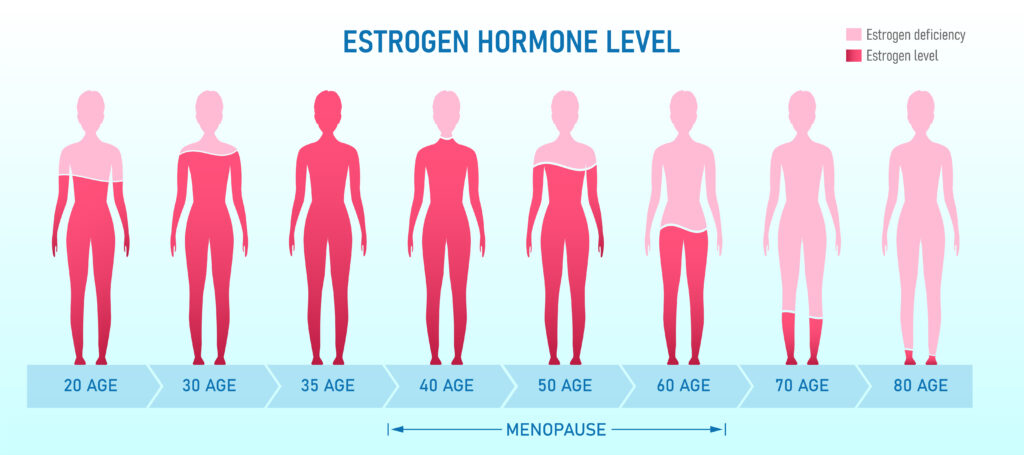Estrogen Cream Benefits An Insight into Causes of Low Estrogen and Its Treatments
Estrogen, a vital hormone produced primarily in the ovaries, plays a crucial role in women's health. From regulating menstrual cycles to maintaining bone density, estrogen's functions are manifold. However, there can be instances where women experience a decline in estrogen levels, leading to a range of discomforting symptoms. One of the popular remedies for these symptoms, especially during menopause, is estrogen cream. This article delves deep into the causes of low estrogen and how estrogen creams can alleviate menopausal discomfort.
Causes Of Low Estrogen
Estrogen levels can naturally decline as a part of the aging process. However, several other factors can lead to decreased estrogen levels:
- Menopause: The most common cause of a drop in estrogen is menopause. As women approach their late 40s and early 50s, the ovaries produce less estrogen, leading to menopause.
- Surgical removal of the ovaries: Oophorectomy, or the surgical removal of the ovaries, can lead to a sudden decrease in estrogen levels.
- Chemotherapy or pelvic radiation treatments: These treatments for cancer can damage the ovaries and reduce their estrogen production.

Premature Ovarian Failure
- Some women's ovaries fail to produce normal amounts of estrogen before the age of 40.
- Chronic kidney disease or other chronic illnesses can also result in decreased estrogen levels.
Estrogen Creams to Treat Menopausal Symptoms.
Menopause can be an unsettling phase for many women, primarily due to the symptoms that arise from dropping estrogen levels. These symptoms can include hot flashes, night sweats, mood swings, and vaginal dryness.
Vaginal dryness, in particular, can be especially distressing. It can cause discomfort, itching, burning, and pain during sexual activity. To treat this symptom, many healthcare professionals recommend the use of vaginal estrogen creams.
Estrogen creams work by delivering estrogen directly to the vaginal tissues. This local application ensures that the vaginal tissues receive the required estrogen without significantly increasing the estrogen levels in the blood. Here are some benefits:
- Alleviation of Vaginal Dryness Estrogen creams can rejuvenate the vaginal lining, increasing lubrication and elasticity. This can significantly reduce the discomfort associated with vaginal dryness.
- Reduction in Urinary Symptoms: Some women may experience urinary symptoms, such as urgency or recurrent urinary tract infections. Estrogen creams can help in reducing these symptoms.
- Safe for Most Women: Concerns about the safety of estrogen replacement therapy, especially in relation to breast cancer, have been prevalent. However, according to Harvard Women's Health Watch, vaginal estrogen is generally safe for most women. Since the estrogen is applied directly to the vaginal tissues, very little enters the bloodstream, minimizing potential risks.
However, like any other medication, it's essential to use estrogen creams under the guidance of a healthcare professional. Women with a history of breast cancer, or liver disease, or those prone to blood clots should discuss potential risks with their doctors.
Using Estrogen Creams
the proper application of estrogen cream is vital for its effectiveness. The cream should be applied as directed, usually once daily for a specific number of days, and then reduced to 1-3 times a week. A special applicator is often provided to ensure the right dose is administered. Consistent use, as prescribed, ensures the best results.
Comfort and Confidence
While menopause is a natural transition in a woman's life, it doesn't mean that one should endure the uncomfortable symptoms that accompany it. Estrogen creams offer a safe and effective solution, particularly for those grappling with vaginal dryness and related symptoms. It's a testament to the advances in women's health, ensuring that every phase of a woman's life is lived with comfort and confidence.
Remember, while estrogen creams offer numerous benefits, it's crucial to use them under the guidance of a healthcare professional to ensure safety and effectiveness.
Back to Blog